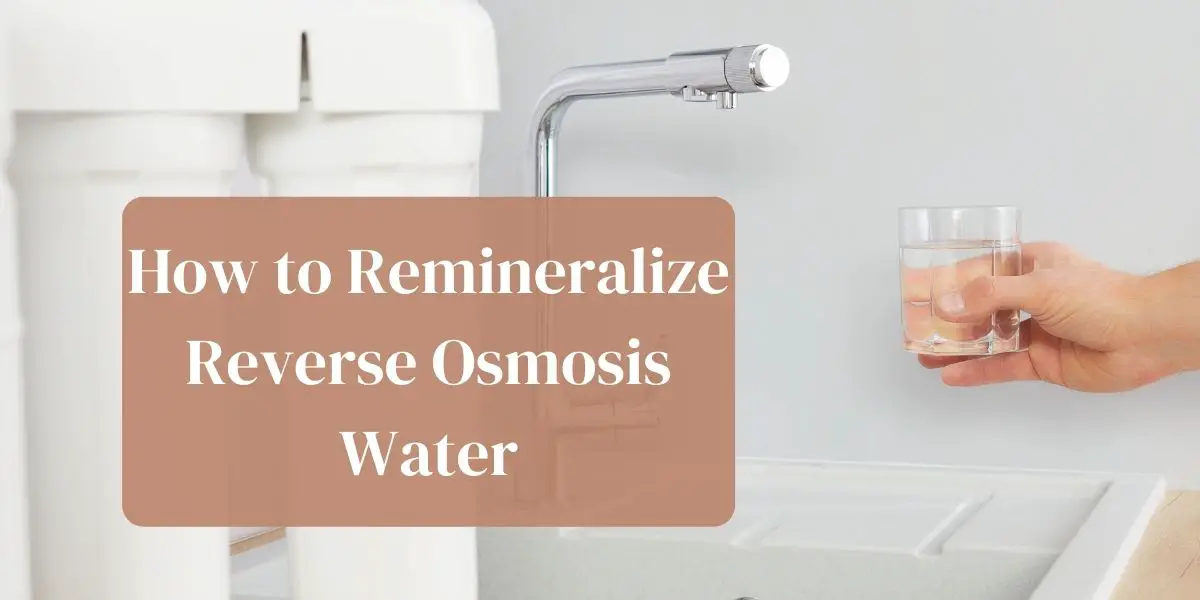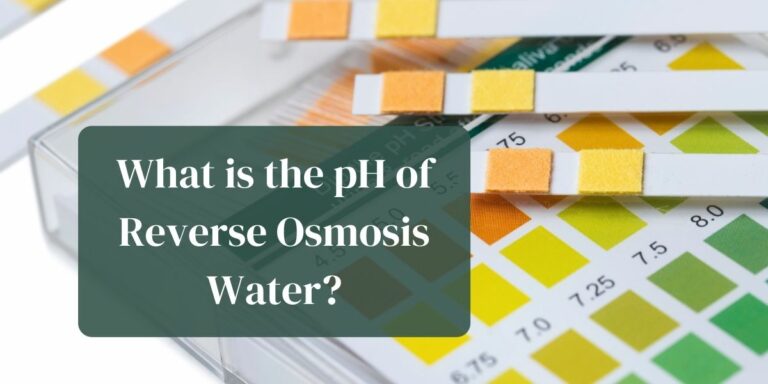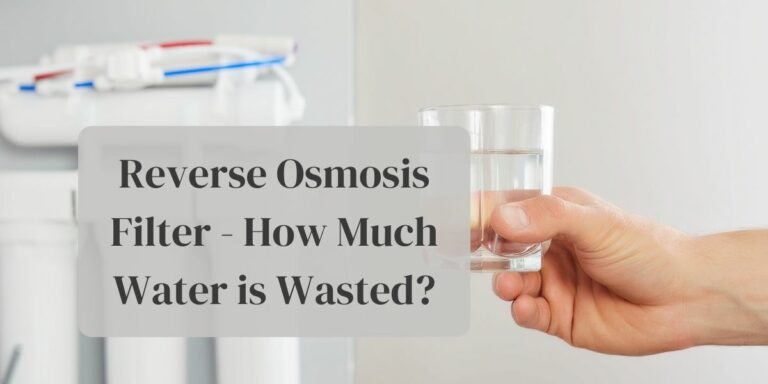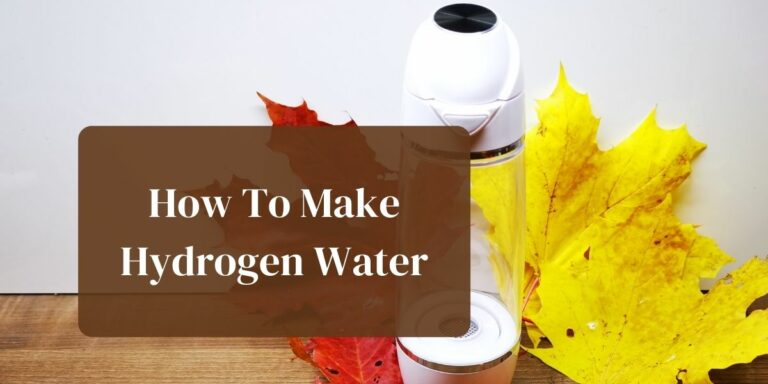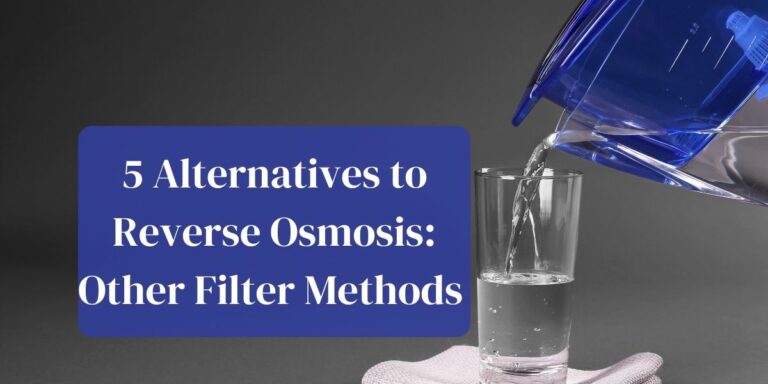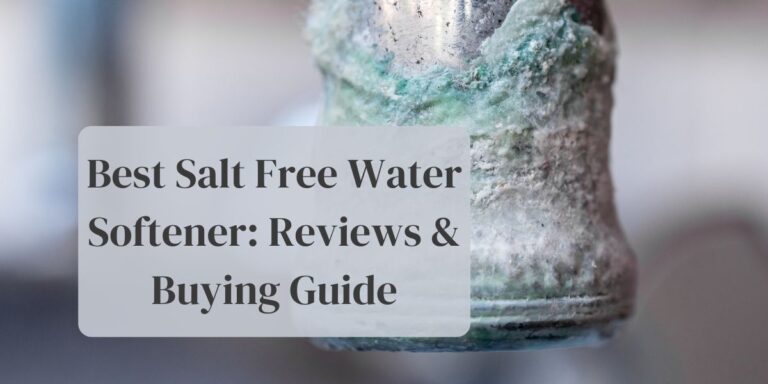Reverse osmosis systems are a great way of purifying water – in regions with bad water quality, they’re the only way to make water from municipal supply drinkable. But the result of reverse osmosis is almost distilled water: a lot of the natural salts and minerals found in water are no longer present.
That’s why some people like to remineralize their water after it has gone through reverse osmosis. In this post, we discuss, whether this is necessary along with 5 methods to remineralize RO water naturally.
Is it healthy to drink demineralized RO water?
Reverse osmosis water is low in calcium and magnesium, two minerals which are vital for a healthy metabolism. Mineral deficiency could have negative impact on body water balance, metabolism, hormones, muscles, and so on.
If you mainly rely on drinking demineralized water long-term, this may result in various health risks, according to a WHO study in 2014. When we consume demineralized water, our intestines have to add electrolytes to the water, taking them from our body reserves. Thus, body water is insufficiently distributed throughout the body and compromise the function of organs.
Your body gets most of the vitamins and minerals it needs from food rather than water. This is true, but: Modern diet doesn’t contain as many essential elements as before, causing mineral deficiency for many people. That’s why even small intake of minerals through drinking water could make a difference.
Also, the study demonstrated that cooking with demineralized water ended up leeching up to 60% of the beneficial minerals from food, neutralizing the positive effects of a healthy diet.
These results led the WHO to issue guidelines for local authorities, suggesting minimum Total Dissolved Solids (TDS) in drinking water to be 150-300 mg/lit, minimum level of calcium 20 mg/l and magnesium10 mg/l.
Last, it should be mentioned, that if you drink demineralized water or use it for cooking only from time to time, you won’t suffer from health issues therefor. However, demineralized water tastes stale and flat, which makes you want to remineralize your RO water nevertheless.
Reasons you may want to remineralize RO water
- Many diets are sadly deficient in minerals, and in these cases, water can supplement the mineral shortage from food.
- Pure water can’t remain pure for long, as it inevitably dissolves some carbon dioxide from the atmosphere. Once carbon dioxide dissolved, it becomes a slight acid and its pH falls. If you wish to drink alkaline water, adding minerals back into water effectively raises the pH.
- If you don’t like the taste of pure water, remineralizing can restore the familiar taste of mineral water.
5 ways to remineralize reverse osmosis water
Now that we discussed the effects of demineralized water, let’s talk about five easy ways to remineralize your RO water:
1. Use a reverse osmosis system with a remineralization stage
Many RO systems ship with an alkalization stage in them. If your unit does not have one, you can easily add one. Basically, this is a filter-like attachment which contains minerals (look for a good quality filter that has food-grade minerals). As the water passes over the minerals, they get dissolved back into the water.
This stage is added after the RO water filter stage. The temperature of the water and the pH of the water before it enters the alkalization stage will determine how many minerals are given back into the water.
This is by far the easiest solution, since you don’t need to worry about doing any manual work. The moment the purified reverse osmosis water enters the remineralization stage, it will be taken care of.
You’ll need to check whichever remineralization stage you’re buying to see which minerals are added back. Additionally, the minerals will eventually run out, so you will need to replace this stage regularly to keep reaping its benefits.
Express Water Reverse Osmosis Alkaline Water Filtration System
10 Stage RO Water Filter with Faucet and Tank – Under Sink Water Filter with Alkaline Filter for added Essential Minerals 50 GPD
[amazon-button link=”https://www.amazon.com/Express-Water-Alkaline-Reverse-Filtration/dp/B078LDV3SY?crid=MVV1KAWYGGG5&keywords=roalka+5d+express+water&qid=1653981986&sprefix=roalka5d+express+water%2Caps%2C369&sr=8-5&linkCode=ll1&tag=susmdaily-20&linkId=2b63b3fb8470c5cbe055e4551b87dd43&language=en_US&ref_=as_li_ss_tl”]
Read our reviews of the best reverse osmosis systems.
2. Use Electrolyte blends
Electrolyte blends (also known as trace mineral drops) are compositions of minerals such as copper, selenium, iron, manganese, calcium, and magnesium that are easily available at most supermarkets. You simply mix the blends back into the water after it comes out of the RO filter.
This is also a straightforward solution, as you just need to add a few drops to your water container.
However, if you and family tend to drink directly from the reverse osmosis faucet, you’ll have to remember to add a drop every single time to remineralize. That’s not really convenient. Alternatively, you can just keep a dedicated water jug from now on and make it a rule to only drink water from it.
Blends will differ in composition from brand to brand, but they’ll do the trick for any RO water.
Natural Fulvic and Humic Trace Mineral Drops with Zinc, Magnesium & More
Liquid Electrolytes Supports Gut Health, Energy, Keto Diets. Add to Coffee, Tea, Smoothie. Make Water Alkaline 2oz
[amazon-button link=”https://www.amazon.com/Magnesium-Electrolytes-Improves-Smoothie-Alkaline/dp/B08FRSL2QB?crid=3LROGDBFZMXQL&keywords=Natural+Fulvic+and+Humic+Trace+Mineral+Drops+with+Zinc&qid=1653982101&sprefix=roalka+5d+express+waternatural+fulvic+and+humic+trace+mineral+drops+with+zinc%2Caps%2C332&sr=8-2&linkCode=ll1&tag=susmdaily-20&linkId=dd450fdb091635ca9622dac882a534b6&language=en_US&ref_=as_li_ss_tl”]
3. Mineral rich salt
You can simply add some natural salt (like Himalayan salt or rock salt) to each gallon of reverse osmosis filtered water. You only need to add a pinch. In an entire gallon, the taste won’t change significantly. It will pretty much taste the same as drinking water.
Just add the pinch and stir to dissolve. Alternatively, if you just leave to sit for a while, it will dissolve by itself.
Don’t use table salt as that’s only sodium and chloride, which is not enough – the rock salt is natural and unprocessed, and contains many more minerals. Only adding table salt may result in you getting too much sodium, which can lead to other issues.
OSR Chef Himalayan Pink Salt
Fine 5 lbs Bag (Pack of 1) | Hand Extracted at the foothill of Himalayan Range | Earthy Flavor | Nutrient and Mineral Dense
[amazon-button link=”https://www.amazon.com/Himalayan-Pink-Salt-Fine-lbs/dp/B08W267JR8?crid=20KMHDJWRN53B&keywords=Himalayan+Chef+Himalayan+Pink+Salt+Fine+Grain%2C+Plastic+Jar-5+lbs&qid=1653982207&sprefix=himalayan+chef+himalayan+pink+salt+fine+grain%2C+plastic+jar-5+lbs%2Caps%2C458&sr=8-1-spons&psc=1&spLa=ZW5jcnlwdGVkUXVhbGlmaWVyPUEyMlNTUkJVSzhBNkg5JmVuY3J5cHRlZElkPUEwNjA4NzQ2MlBDMTU4RllGQUczOSZlbmNyeXB0ZWRBZElkPUEwMzMwNjkzMTBZSFZOM0FXQklYQiZ3aWRnZXROYW1lPXNwX2F0ZiZhY3Rpb249Y2xpY2tSZWRpcmVjdCZkb05vdExvZ0NsaWNrPXRydWU%3D&linkCode=ll1&tag=susmdaily-20&linkId=c6226969c67a4ea396eea41b1a8efc42&language=en_US&ref_=as_li_ss_tl”]
4. Get an alkaline water filter pitcher
Use an alkalizing water filter pitcher to store your water, and that will automatically remineralize your water. They’re a bit more expensive than using mineral rich salts or electrolyte blends, but they’ll also last longer.
Alkaline water filter pitches have a small remineralization stage at the top of the system, which adds trace amounts of minerals back into the water as it drips from the top into the bottom chamber.
You’ll need to replace the filters every so often once they get depleted.
Ehm Ultra Premium Alkaline Water Filter Pitcher
3.8L, Activated Carbon Filter- BPA Free, Healthy, Clean, & Toxin-Free Mineralized Alkaline Water in Minutes- Up to 9.5 pH
[amazon-button link=”https://www.amazon.com/Ultra-Premium-Alkaline-Water-Pitcher/dp/B00HYEIJLW?crid=4KHAX7AQ76FC&keywords=Ehm+Ultra+Premium+Alkaline+water+Filter+Pitcher+-+3.8L&qid=1653982306&sprefix=ehm+ultra+premium+alkaline+water+filter+pitcher+-+3.8l%2C%2Caps%2C415&sr=8-2-spons&psc=1&smid=AXW42OG78U306&spLa=ZW5jcnlwdGVkUXVhbGlmaWVyPUEzSk84WlhRRlNaUkc4JmVuY3J5cHRlZElkPUEwODkzOTg4M0VPWTA2T0FJRTJMNyZlbmNyeXB0ZWRBZElkPUEwNDczNDU0MkczVTNVWDUzVDY4OCZ3aWRnZXROYW1lPXNwX2F0ZiZhY3Rpb249Y2xpY2tSZWRpcmVjdCZkb05vdExvZ0NsaWNrPXRydWU%3D&linkCode=ll1&tag=susmdaily-20&linkId=c6d41ccec1cf5b55958aa99698ce5dd2&language=en_US&ref_=as_li_ss_tl”]
5. Greens blends
Greens blends are extracted minerals from vegetables and plants. These are a broad range of balanced minerals that are vital for you, but the downside is that they’re costly since they have to be made from the vegetables themselves.
They’ll also make the water taste a bit different from what you’re used to, so you may not actually like it!
They’re not a good choice for long-term use, especially if you are on a budget, but we’ve just included this method in the post for being thorough. In all honesty, it would be cheaper (and better for you) to just eat vegetables.
Super Greens Powder Premium Superfood | 20+ Organic Green Veggie Whole Foods
Wheat Grass, Spirulina, Chlorella & More | Antioxidant, Digestive Enzyme & Probiotic Blends | Vegan Juice Supplement
[amazon-button link=”https://www.amazon.com/Super-Greens-Premium-Superfood-Powder/dp/B07FLDK6ZY?keywords=super+greens+powder&qid=1653982390&sprefix=super+greens+po%2Caps%2C377&sr=8-13&linkCode=ll1&tag=susmdaily-20&linkId=f747d6c436a4b6c3e41d36022b0ff03f&language=en_US&ref_=as_li_ss_tl”]
Conclusion
Reverse osmosis water is not necessarily bad for you – in fact, in some places, it’s extremely vital to use a reverse osmosis filter; otherwise you may be susceptible to water-borne diseases.
In India, for example, most homes are fitted with RO systems in the kitchen and all drinking water comes from the RO filter or bought in bottles. There’s no other way, unfortunately.
As I mentioned at the beginning of the article, it is not absolutely necessary to remineralize RO water if you eat a healthy diet. In fact, the main driving reason behind wanting to remineralize water should be either to improve the taste or to prevent leeching in cooking.
If you want to see the difference in taste between reverse water and mineral water, buy a bottle of Dasani and Aquafina water and have a taste of both. Both are processed in RO plants, but Dasani water has some mineral content added back into it. Aquafina does not.
Remineralizing RO water is straightforward and affordable, so I’d recommend making the little investment in improving our most important “food”: drinking water.

